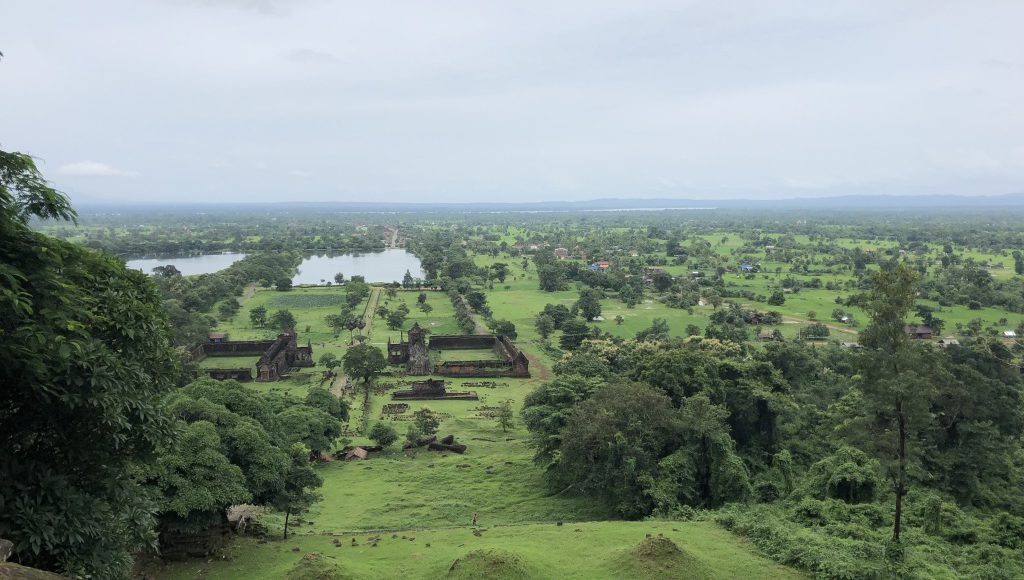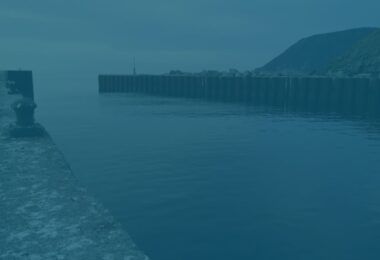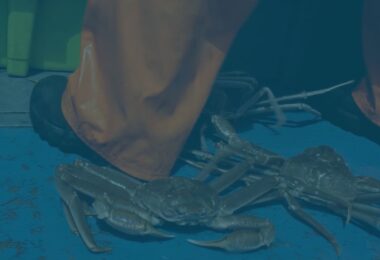Located four miles from the mighty Mekong River near Pakse in Champasak Province, Wat Phu, with structures built between the 11th and 13th centuries, is considered older than the great temple complex at Angkor Wat, Cambodia.
“You go up seven levels and you will reach heaven,” suggested my local guide, pointing to the steep, rocky stairway leading to the top of Phou Khao. It was a humid afternoon in late July in Southern Laos, and I was at the Khmer Hindu temple, Wat Phu (Vat Phou), a UNESCO World Heritage site. Sitting at the base of a mountain whose peak is shaped like a lingam, the symbol of Lord Shiva, the temple is blessed with a permanent natural spring flowing from the mountaintop.
Sweat drenched my clothes as I made my pilgrimage to the sanctuary in the sky, at times hugging the knee-high, moss-covered stones to leverage myself. Visiting monks from Thailand took out their cellphones to capture the sights. Worshippers purchased flower offerings from the stalls along the way. The scent of burning incense near the giant Buddha statue at the foot of the stairs hung in the thick, summer air. When I finally reached the top, refreshing droplets from the mountainside fell from the heavens, one of many blessings I found at this sacred place.
Nature and divinity are intertwined in Hinduism, with most temples built atop mountains, allowing devotees to connect with the spiritual world through their surroundings. Located four miles from the mighty Mekong River near Pakse in Champasak Province, Wat Phu, built around 11th and 13th centuries, is considered older than the great temple complex at Angkor Wat, Cambodia. The sanctuary is oriented towards the east, with two palaces with rectangular courtyards standing on either side of the stone walkway; the North belonged to the men, and the South to the women, of the Khmer Empire.
Today, the settlement is a center of Theravada Buddhism, where a shrine on the main altar is dedicated to Lord Buddha. It can only be reached by climbing narrow stone stairs, an effort rewarded with stunning views of the ruins below, rice paddies, villages, and the swelling Mekong River. The sandstone and laterite temple boasts intact pillars and magnificent Hindu wall carvings, including an intricate depiction on the entrance lintel of Indra, the god of the heavens, storms, rains, and river flows, riding a three-headed elephant guarding the valley below.
The relationship between nature and humanity is at the center of both religions. As a Hindu, I find God in nature, from the smallest of creatures to the grandest of mountains.
Ascending the stairs, I watched my footing to avoid the ants forming processions up and down the rocks. Whimsical mountain goats that call the ruins home were a delight to watch, as were the gentle cows grazing in the terraces next to lotus ponds. Fallen frangipani flowers dotted the path, with sprawling mango trees providing much-needed shade.
During my trek upwards, I saw locals sitting in front of small wooden cages of trapped sparrows. These tiny birds, two in each, fluttered their wings in a feeble attempt to escape. I wondered if they were hawking these poor birds, and later discovered that they were instead selling their freedom. I couldn’t help myself and spent a few hundred baht (Thai currency is accepted in Laos) to release a bunch of sparrows. The second the cage door opened, the birds disappeared into the trees, and I prayed they wouldn’t be captured again. When I looked back, I noticed the vendor had already refilled the cages with more birds. As sad as it was, I had the harsh realization that this woman was trying to feed her family. The birds were given food and water in their cages, and soon found their freedom, thanks to the steady stream of visitors willing to set them free for a price. I hoped the little ones weren’t harmed in the process.
As my tour came to an end, it was the dogs—the ones that congregated near the temple in the hopes of scraps from visitors and monks—that stuck with me. At the entrance, local women sold fried banana, a popular snack in Southeast Asia. Stray dogs circled the grills, often sneaking in to lick the grease that had fallen on the ground, before being shooed away. One little dog, inflicted with severe mange, wouldn’t stop scratching her bare, lesioned skin. All this time, I had been worried about my own discomfort in the heat. Realizing what this poor thing has to contend with, I felt helpless.
My time here was short, and I did what I thought would bring some respite. I gave 20 baht to one of the women and bought a few bananas to feed to the dogs. One sweet dog approached me, curious, with a twinkle in her eyes—just like the dogs I have back home, and gladly took a bite out of a banana. Another stray took an entire banana and brought it to her babies.
As I left, I took one parting glance and saw the dog with mange settling in for a nap, and I hoped that she, too, would make it to the seventh heaven and be blessed with the holy water.
Getting to Wat Phu
Travel to Wat Phu from Pakse via land or by boat along the Mekong River. You can also add a day trip from eastern Thailand.










No comments